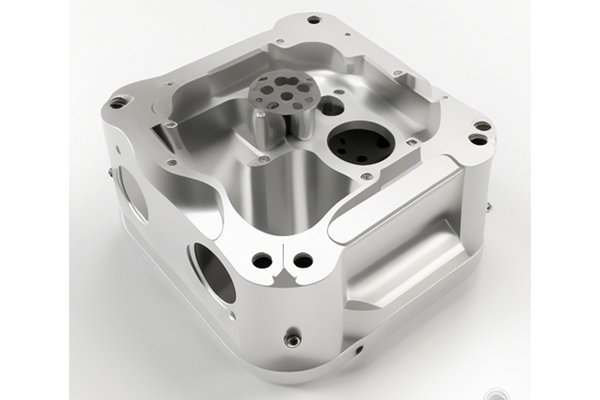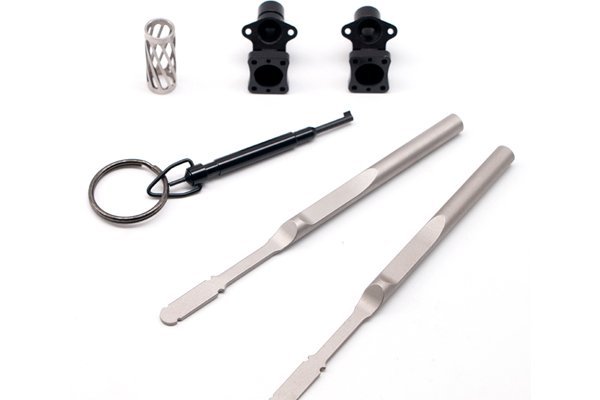: The Rise of CNC Machining
Did you know that the global CNC machining market is expected to reach over $100 billion by 2025? This astounding growth is a reflection of the increasing demand for precision engineering across various industries, including aerospace, automotive, and healthcare. But what does this mean for companies seeking to produce custom metal parts? As businesses strive for increased efficiency and accuracy in their production processes, CNC (Computer Numerical Control) machining has emerged as a game-changer.
In this comprehensive guide, we’ll explore how CNC machining services are ensuring precision in custom metal parts production. From the intricacies of design to the final touches of finishing, this blog covers every aspect of CNC machining that affects precision, offering solutions to common challenges faced in the industry.
—
Chapter 1: Understanding CNC Machining
1.1 What is CNC Machining?
CNC machining is an advanced manufacturing process where computers control machining tools with high precision. The process begins with a computer-aided design (CAD) model which is then translated into a numerical code that drives the machines performing the necessary operations, such as milling, turning, and drilling.
1.2 The Importance of Precision in CNC Machining
Precision is not just a desirable quality in machining; it is essential. Industries that require custom metal parts often have stringent specifications to meet. A minor deviation can result in malfunctioning components, costly reworks, or even catastrophic failures. Therefore, understanding the techniques that facilitate precision in CNC machining is crucial.
—
Chapter 2: Designing for Precision
2.1 CAD Modeling
The journey to precision starts with impeccable design. Using CAD software, designers can create highly detailed and accurate models of the parts to be machined. Features such as geometric dimensioning and tolerancing (GD&T) help convey the exact specifications for manufacturing, minimizing ambiguity.
2.2 Prototyping
Before full-scale production, creating prototypes allows manufacturers to test the design’s feasibility. Modern CNC systems can utilize rapid prototyping techniques to produce models quickly, enabling designers to identify any potential issues early in the process.
—
Chapter 3: The Power of Five-Axis Machining
3.1 What is Five-Axis Machining?
While traditional CNC machining typically operates on three axes (X, Y, and Z), five-axis machining adds two more rotational axes (A and B). This enables the tool to approach the workpiece from virtually any direction, which is particularly beneficial for complex geometries.
3.2 Benefits of Five-Axis Machining for Precision
—
Chapter 4: Material Selection and Preparation
4.1 The Role of Materials in Precision Machining
Choosing the right materials is an integral part of producing high-quality custom metal parts. Materials such as aluminum alloys, brass, and stainless steel each come with unique properties that can affect machinability and final dimensional accuracy.

4.2 Grinding and Finishing Techniques
Once raw materials are ready for machining, they often require grinding and finishing processes to achieve a precise surface and tolerances. Techniques such as surface grinding, honing, and polishing can be applied based on the specific requirements of the part being produced.
—
Chapter 5: CNC Machine Calibration
5.1 Importance of Machine Calibration
Regular calibration of CNC machines is vital for ensuring accuracy. Even minor deviations in machine settings can lead to significant discrepancies in final products over time. Understanding common calibration processes, such as geometric and thermal calibration, is essential.
5.2 Automation and Precision
With the rise of IoT (Internet of Things), CNC machines can now self-monitor and adjust in real-time, further enhancing precision. Smart sensors and data analytics enable operators to receive alerts for maintenance before issues affect productivity.
—
Chapter 6: Quality Assurance
6.1 The Need for Quality Checks
Quality assurance (QA) protocols must be instituted at various stages of the CNC machining process. This is crucial for maintaining precision throughout the production cycle. Different industries follow different standards, such as ISO 9001, to guarantee the adherence to quality.
6.2 Inspection Techniques
Techniques such as coordinate measuring machines (CMM), laser scanning, and X-ray inspection can help ensure that every part meets its specifications. Furthermore, statistical process control (SPC) helps track and monitor factors that affect quality.
—
Chapter 7: The Future of CNC Machining
7.1 Technological Advancements
Just as CNC technology has evolved, the future promises faster, smarter, and more efficient machinery. Artificial intelligence (AI) and machine learning will be pivotal in optimizing machining processes, predicting maintenance needs, and enhancing overall precision.
7.2 Sustainability in Machining
As industries shift towards sustainable practices, CNC machining will also adapt. From using eco-friendly materials to implementing recycling programs for metal waste, the overall approach to precision manufacturing will change.
—
: The Importance of Precision in CNC Machining
In summary, precision in custom metal parts production through CNC machining is a multifaceted process encompassing design, advanced manufacturing techniques, quality assurance, and ongoing technological advancements. By understanding the significance of each of these elements, manufacturers can enhance their production quality while meeting the heightened expectations of their industries.
As we conclude this extensive exploration of CNC machining precision, it’s essential to reflect on its impact. Whether you’re involved in the automotive sector, healthcare, or any field requiring precision-engineered custom parts, knowing how to leverage CNC machining effectively is vital.
In an age of rapid technological advancement and increasing global competition, understanding and implementing precision manufacturing processes can make all the difference in maintaining a competitive edge. As our world becomes more interconnected and technology-dependent, CNC machining stands out as a key player in the manufacturing landscape.
This blog serves not just to inform, but also to challenge industry professionals to rethink their processes and embrace the precision offered by CNC machining—an investment worth making for the future of manufacturing.






